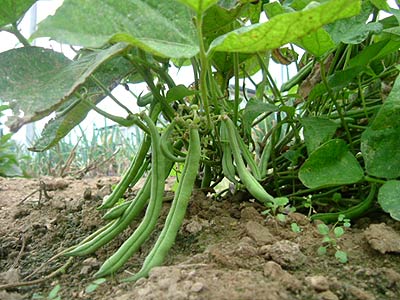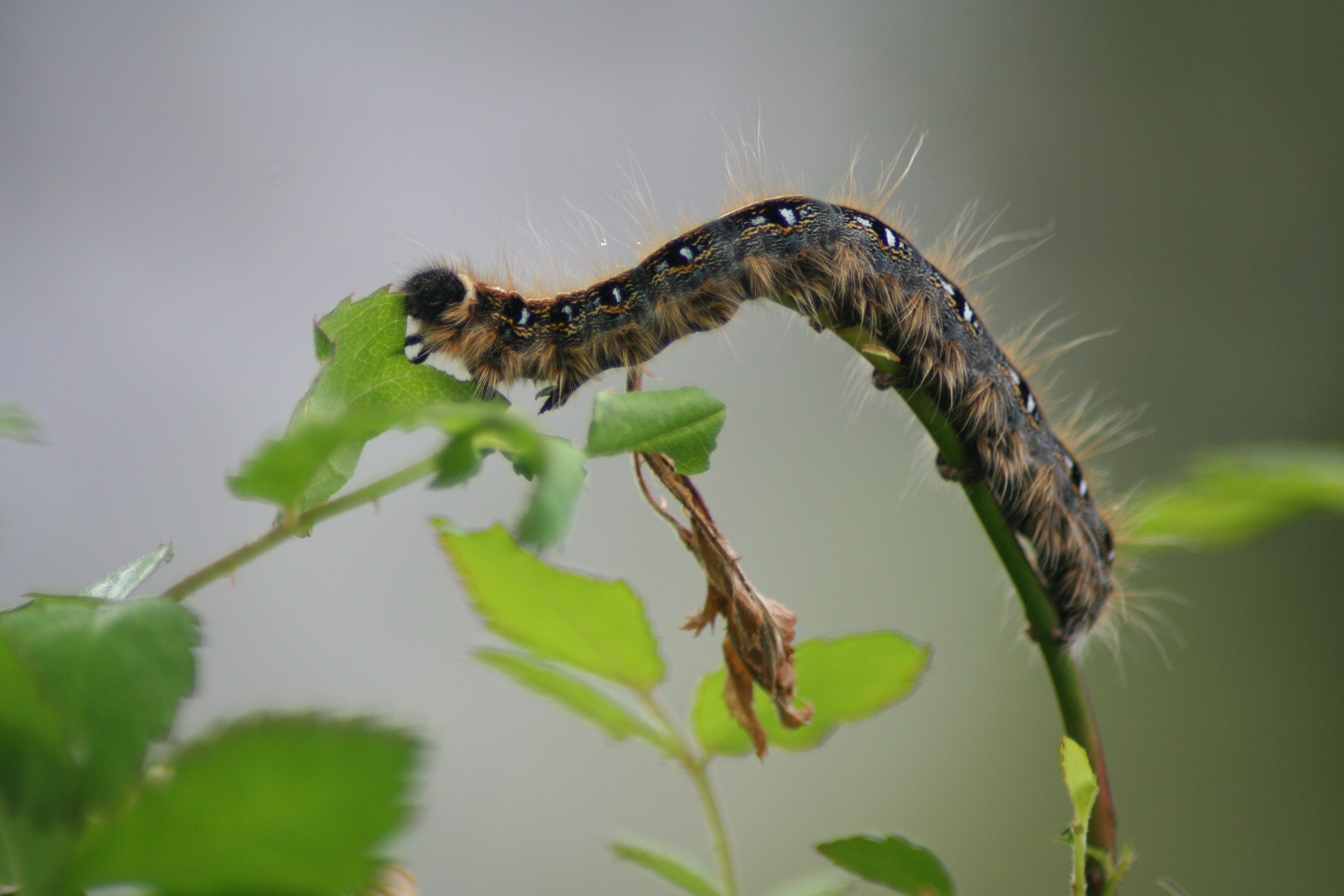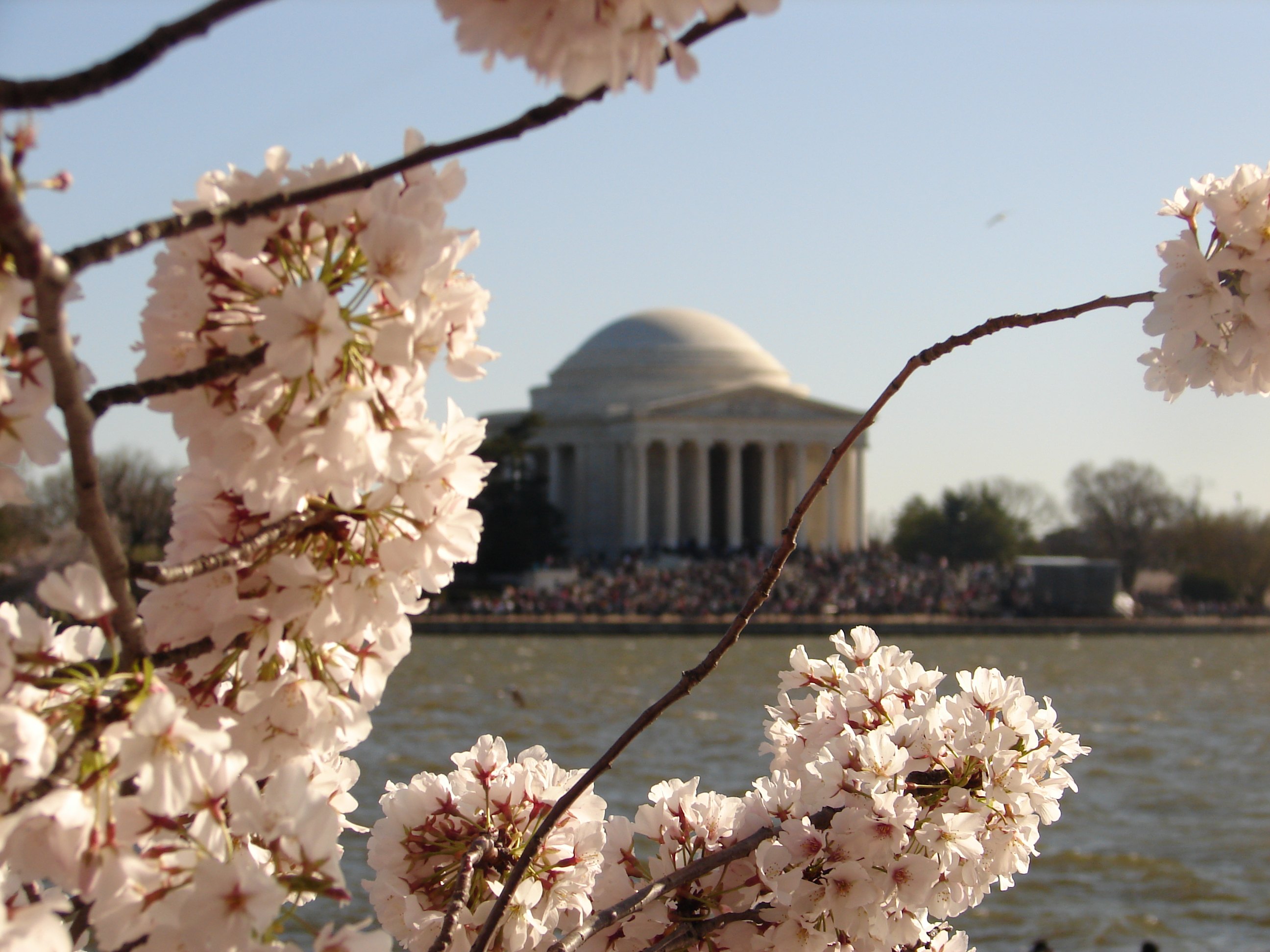Showing posts with label seasons. Show all posts
Showing posts with label seasons. Show all posts
Sunday, October 2, 2011
California Almonds
I recently got a tour of some Cali Central Valley almond farms from the Almond Doctor.
The nuts were in the process of being harvested. The first step is to shake the nuts off the tree with a machine that grabs them around the trunk (here's a video*). One way you can tell almond and peach (both Prunus species) orchards apart is to look at how low the first branches are. Almond trees are trained to branch higher above the ground to give the machine room to grab them. Peach trees are trained to branch almost immediately above the ground to help most of the canopy stay low enough to be reached without ladders (due to the increased chance of injuries). Maximum canopy height is more rigorously limited in peaches for the same reason.
Sunday, August 14, 2011
I have a yard!
I spent the day moving the first of my stuff into the new house I'm renting. I'm very excited to finally be somewhere besides a one bedroom apartment. The yard's pretty shady but presents some interesting gardening opportunities that I'm working over in my head.
Monday, August 8, 2011
Putting up Hay
It used to be a common sight for me this time of year (on the way to the maize experimental fields) to see straw and hay being raked into windrows by hay rakes (video 1 2). Though most of us tend to use these words interchangeably, hay is a crop grown specifically for animal feed and straw is the leftover stems and leaves of a harvested grain that may be used for animal feed, bedding or construction. Common annual and perennial hay crops include legumes (e.g. alfalfa and clover) and grasses (e.g. timothy, brome, orchard grass and tall fescue). Straw usually comes from whatever grain is being grown in your area (e.g. wheat or barley).
Tuesday, June 28, 2011
First! (to harvest garden sweet corn)
Well, it's not from the garden, per se. It's from the greenhouse.
When I got the keys to my greenhouse space, one of the first things I did was sow a bunch of field crop seeds. I didn't know if there would be a need for me to grow them in the greenhouse, but I did know that it can be a tricky proposition. Better to sketch out a quick SOP now than wait till I need one and then add a 6 month delay to the project as I figure it out on the fly...
When I got the keys to my greenhouse space, one of the first things I did was sow a bunch of field crop seeds. I didn't know if there would be a need for me to grow them in the greenhouse, but I did know that it can be a tricky proposition. Better to sketch out a quick SOP now than wait till I need one and then add a 6 month delay to the project as I figure it out on the fly...
Thursday, May 5, 2011
Opportunistic Gardening
It's amazing what you can accomplish with some reckless enthusiasm and an emergency shovel.
I've been out of grad school/postdoc for half a year now but have been slow to acclimate to my new budget. After spending 75 bucks to rent my garden plot, I couldn't help but balk at the idea of spending hundreds more on tools, containers, plants and fencing - so I started cutting corners.
Warning: irrational frugality will be a theme here...
I've been out of grad school/postdoc for half a year now but have been slow to acclimate to my new budget. After spending 75 bucks to rent my garden plot, I couldn't help but balk at the idea of spending hundreds more on tools, containers, plants and fencing - so I started cutting corners.
Warning: irrational frugality will be a theme here...
Sunday, April 10, 2011
Spring arrives in Metro DC
It showed up a couple weeks earlier in the heat island of the city proper.
The cherries bloomed first in DC, than along the highways and now in my apartment complex. I imagine my neighbors around the courtyard wished these Bradford pears smelled like cherry trees. I don't mind. The scent reminds me of my suburban street hockey days.
"car! ... game on!"
Tuesday, February 15, 2011
New to Agriculture?
The Cornell Hort Blog just linked to the new Northeast Beginner Farmers Project website:
In the meantime, back to trying to find a CSA and community garden plots in the MD DC area... Any suggestions?
"Do you wonder how other farmers breed pigs, process chickens and transplant seedlings? The new site features a growing selection of videos capturing experienced farmers and their successful production techniques in action. You’ll also find our popular library of video interviews with farmers sharing advice on profitability, choosing an enterprise, evaluating land, and much more."Looks interesting! I'll definitely check it out more when I have extra time.
In the meantime, back to trying to find a CSA and community garden plots in the MD DC area... Any suggestions?
Tuesday, November 16, 2010
Which Clementines Taste Good?
Citrus season is here! Hooray!!!
I bought my first box of "clementines" and am already disappointed. and I've decided to do something about it...
I bought my first box of "clementines" and am already disappointed. and I've decided to do something about it...
Wednesday, September 8, 2010
Monarch Caterpillar
 I took this picture of what appears to be a monarch butterfly caterpillar on an isolated milkweed plant in my parents' garden a few weeks ago. I was home over the weekend and checked the same plant. The milkweed was dried up and the seed heads gone to fluff and there was no sign of a chrysalis, so I don't know if the bug made it out alive.
I took this picture of what appears to be a monarch butterfly caterpillar on an isolated milkweed plant in my parents' garden a few weeks ago. I was home over the weekend and checked the same plant. The milkweed was dried up and the seed heads gone to fluff and there was no sign of a chrysalis, so I don't know if the bug made it out alive.Back in Oklahoma, September was the month that was full of monarchs; their migration pathways converged from all over the East as they approached their wintering grounds in Mexico.
Tuesday, August 10, 2010
We(eat)ding
 The dominance of weeds in our community garden plots is truly unbelievable. You'd be forgiven for mistaking the whole thing for a crop of oilseed rape. Although several of the plots are well-tended and fenced (can you see the fences?), the majority of the field is completely yellow with Brassica flowers.
The dominance of weeds in our community garden plots is truly unbelievable. You'd be forgiven for mistaking the whole thing for a crop of oilseed rape. Although several of the plots are well-tended and fenced (can you see the fences?), the majority of the field is completely yellow with Brassica flowers.
Sunday, July 25, 2010
Farming on Luck
 Well, we got our green beans harvested last Friday. I was in the corn fields at the time, but I heard they were able to pick up about 1,300 lbs of beans from a total yield of about 1,800 lbs.
Well, we got our green beans harvested last Friday. I was in the corn fields at the time, but I heard they were able to pick up about 1,300 lbs of beans from a total yield of about 1,800 lbs.A fair number of plants were heavy with recent rain and sagged under the reach of the harvester. We could have waited for the field to dry some, but thanks to weather forecasting we didn't - more rain was on its way over the weekend. The next chance we could get into the field, we'd likely have found the beans woody and inedible.
Still, not a bad donation to the food bank!
Friday, July 16, 2010
The People's Garden: part II
 Well, all the plants are in the ground in our food bank garden.
Well, all the plants are in the ground in our food bank garden.It was pretty fun listening to all the real horticulturalists hash out the details to our plan, with frequent reference to the classic Knott's Handbook, which is definitely now on my wishlist. Those guys really know production ag - especially through their professional and familial ties to our local upstate farmers.
So here's our acre: It was winter cover-cropped in rye, the farm crew tilled it in, built up beds and lay plastic mulch (picture 2 x 200' strips of black plastic garbage bags) over granular fertilizer. We decided to take our chances and skip the irrigation tape. The whole thing was split into four blocks - each containing the appropriate number and width of rows to allow a tractor with 20' booms to reach everything. Each block needed to be limited to one crop family in case we need to spray pesticides later (which are regulated by crop family).
Saturday, July 10, 2010
Fall, foreshadowed
Wednesday, June 2, 2010
Anthesis
 Anthesis = flowering.
Anthesis = flowering.This term is used a lot with grasses (e.g. grains) to denote when the anthers poke out of the bracts to release pollen. I grabbed this example at the end of a run. A bunch of the anthers fell off already, but their bright yellowness was striking - especially en mass on the roadside. I've seen few grasses with such dramatic flowers.
Tuesday, June 1, 2010
New running route, New plants to learn
 I just went for a walk along the country road I now live off of (this one's paved). It'll make for a nice running route. It's lined by active ag fields (some run by the University) instead of fallow pastures and has a number of wildflowers and weeds that I already don't recognize. There are also at least 4 grasses, which I won't even attempt to ID unless I'm given reason to.
I just went for a walk along the country road I now live off of (this one's paved). It'll make for a nice running route. It's lined by active ag fields (some run by the University) instead of fallow pastures and has a number of wildflowers and weeds that I already don't recognize. There are also at least 4 grasses, which I won't even attempt to ID unless I'm given reason to.I was captivated by the tall, rippling roadside grasslands I saw in southern Virginia this past weekend (they reminded me of my childhood Plains - there were even some clumps of prickly pear!). I was all ready to post a rant blasting PA for their ugly, ragged mowed highway corridors when I climbed north into Harrisonburg and the tall grasses gave way to short ones and scrubyness - so I guess it's not just obnoxious landscaping's fault. I don't know if the soil/climate changed or the southern end of 81 is heavily seeded by the local pasture grasses (the ecoregion map provided few clues) but I'll hopefully have the presence of mind next time I'm down there to grab some flowers to ID.
I have the means: a 1935 copy of Manual of the Grasses of the United States.
Wednesday, May 19, 2010
an Epiphyte in New York
 I was admiring the big, broad trees along our campus' main road today when I noticed some small, non-lobed leaves coming out of one of the oaks. On further inspection, what appeared to be a 3-foot tall cherry tree was growing out of the main crotch, nearly 10-feet above the ground!
I was admiring the big, broad trees along our campus' main road today when I noticed some small, non-lobed leaves coming out of one of the oaks. On further inspection, what appeared to be a 3-foot tall cherry tree was growing out of the main crotch, nearly 10-feet above the ground!I wonder what other creatures may be hidden up there...
(besides the masses of tent caterpillars that is...)

Monday, May 10, 2010
The Garden Plan!
 My 20' x 20' community garden plot is up and running. This picture was taken last Thursday - note that our trees still aren't leafed out completely. It actually snowed as recently as this past Sunday.
My 20' x 20' community garden plot is up and running. This picture was taken last Thursday - note that our trees still aren't leafed out completely. It actually snowed as recently as this past Sunday.North Neighbor was planting onions with his son when I dropped sweet corn in dual rows along the North and South borders (I'll be hand-pollinating them). Our frost free date isn't for another week yet, but the weather when I planted was consistently hot - though of course now they're forecasting hard frosts for tonight and maybe tomorrow, so we'll see what happens. I sowed peas a few days before the corn, but hopefully they won't emerge for another 2 days. My salad greens and carrots were sowed two weeks ago, when I raised the deer netting. I'm not too worried about them though - I had dropped some seed in my deck planters nearly a month ago, and all have survived several frosts so far.
I didn't take West Neighbor seriously when she said that weeds would become a big problem. I know a lot of people will abandon their plots to chest-high weeds later in the summer, seeding the rest of us - but I don't plan on having any bare soil by then. In another few weeks I'll transplant in fall broccoli and warm weather stuff - beans, locally-adapted melons and a panel of tomatoes from an amateur breeding project.
Stopping by after the first post-till rain last week, the problem became more obvious. The whole field had a slight green sheen of millions of tiny sprouts. It won't be much of a problem when I transplant in larger plants, but the carrot and salad subplot I sowed two weeks ago is an emerging nightmare. I'm gonna have to take my own advice to properly identify my salad greens. Maybe this is why other people built up raised mounds of compost and dirt to plant in.
Good thing I actually planted in furrows for once...
Friday, April 30, 2010
March to May in 400 miles
 A car can make climate differences pretty obvious. The cherry blossoms are spent here down in the valley, but the hillsides were all decidedly brown when I climbed onto 81-south. The pears and apples were just getting rolling and the canopy trees were tentatively pushing out catkins. Somehow, our early burst of cherry and magnolia blossoms survived recent snow flurries - though I doubt the same occurred up in Saranac Lake.
A car can make climate differences pretty obvious. The cherry blossoms are spent here down in the valley, but the hillsides were all decidedly brown when I climbed onto 81-south. The pears and apples were just getting rolling and the canopy trees were tentatively pushing out catkins. Somehow, our early burst of cherry and magnolia blossoms survived recent snow flurries - though I doubt the same occurred up in Saranac Lake.An hour or two into my drive, it became obvious that the forests had caught red fire with maple flowers. As I wound down through the hills of Pennsylvania, the woods yellowed. Eventually they flushed green in the high-carved Appalachian hillsides above the hard, blue Susquehanna. I was very happy to arrive in early summer as I crossed the Mason-Dixon line, leaving PA's omnipresent "clean" coal and "massage" parlor billboards and the nation's worst radio stations behind.
Monday, March 22, 2010
Getting Ready for Cherry Blossoms
 It'll be a little while yet before Prunus species are flowering Upstate, but I keep checking the buds all the same.
It'll be a little while yet before Prunus species are flowering Upstate, but I keep checking the buds all the same.Scientists and growers who work with these plants have names for each stage of flower development.
 The cherry on our lab's front lawn currently has dormant buds.
The cherry on our lab's front lawn currently has dormant buds.Soon, they'll begin to swell as a flush of fresh, fine roots venture out into the warming soil. The roots we generally see when we dig up trees are structural and distract from the real action. The few scientists who have attempted to study roots in detail have discovered that the fine roots are incredibly dynamic, turning over many times during the year in response to environmental cues.

The buds enter the delayed dormancy period as soon as they begin to swell.
 Green tip signals the end of delayed dormancy and the beginning of blooming.
Green tip signals the end of delayed dormancy and the beginning of blooming. Green tip transitions to pink bud as soon as the petals are visible.
Green tip transitions to pink bud as soon as the petals are visible. This is the popcorn stage.
This is the popcorn stage. And the almond flower reaches full bloom!
And the almond flower reaches full bloom!h/t: The Almond Doctor
Friday, March 19, 2010
First Bloom of Spring!
 Spring is so much more exciting when you live in a climate with snowy, sun-starved winters!
Spring is so much more exciting when you live in a climate with snowy, sun-starved winters!I ate my lunch outside on the bench for the first time this year and noticed this little guy popping up. Bulbs besides daffodils are usually grown as annuals in this town due to our absurd deer pressure, but this little guy was sheltered up against the wall. Soon our lab's front lawn will be covered with little purple violets.
The sun is so great.
Subscribe to:
Posts (Atom)









